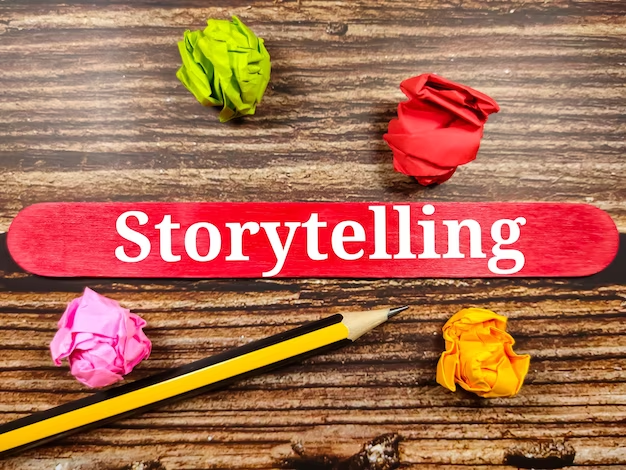
Storytelling is an ancient art form that has the power to captivate and connect with audiences on a deep emotional level. Whether you are a writer, marketer, teacher, or public speaker, mastering the art of storytelling can greatly enhance your ability to convey ideas, evoke emotions, and leave a lasting impact on your listeners. From understanding the fundamental elements of a compelling narrative to utilizing effective techniques, we’ll delve into the intricacies of storytelling.
The Importance of Storytelling
Storytelling is an essential aspect of human communication that has been prevalent across cultures for centuries. It serves as a vehicle for sharing experiences, passing down traditions, and inspiring others. Effective storytelling enables us to communicate complex ideas in a way that resonates with our audience, making it an invaluable skill in various domains. Whether you aim to entertain, educate, or persuade, storytelling can help you achieve your goals by capturing attention, fostering empathy, and leaving a lasting impression.
Understanding the Elements of a Compelling Narrative
Every captivating story comprises essential elements that create a seamless and engaging experience for the audience. These elements include:
1. Introduction or Exposition: This sets the stage by introducing the characters, setting, and initial conflict. It establishes the context for the story;
2. Rising Action: The rising action builds tension and develops the narrative. It introduces obstacles, challenges, and escalating conflicts that keep the audience engaged;
3. Climax: The climax is the pivotal point of the story. It represents the highest point of tension and leads to a turning point or resolution;
4. Falling Action: Following the climax, the falling action begins to resolve the conflicts and leads the story towards a conclusion;
5. Resolution or Conclusion: The resolution offers closure to the story, tying up loose ends and providing a satisfying ending for the audience.
Crafting Engaging Characters
Compelling characters are the heart of any great story. They drive the narrative, elicit emotions, and allow the audience to connect with the story on a personal level. When creating characters:
- Develop multidimensional characters with strengths, weaknesses, and relatable traits;
- Provide characters with clear goals, motivations, and desires;
- Ensure characters undergo growth and transformation throughout the story;
- Use vivid descriptions and dialogue to bring characters to life.
Setting the Stage: Creating Vivid Environments
The setting of your story plays a crucial role in immersing the audience in the narrative. To create vivid environments:
- Use descriptive language to paint a clear picture of the surroundings;
- Incorporate sensory details to engage the audience’s senses;
- Consider the historical, cultural, or social context to enhance the setting’s authenticity;
- Establish the atmosphere and mood to create the desired emotional impact.
Building Tension and Conflict
Tension and conflict are essential for keeping your audience engaged and invested in your story. To build tension:
- Introduce obstacles, challenges, or opposing forces that the characters must face;
- Escalate the conflicts gradually to maintain a sense of suspense;
- Utilize foreshadowing to hint at potential conflicts or plot twists;
- Incorporate moral dilemmas or internal conflicts to add complexity.
Employing Plot Twists and Surprises
Plot twists and surprises inject excitement and intrigue into your storytelling. Consider the following techniques:
- Subvert expectations by presenting an unexpected turn of events;
- Foreshadow subtly to create a sense of anticipation;
- Introduce unreliable narrators or hidden motives to add intrigue;
- Use dramatic irony to create tension between the audience and the characters.

Utilizing Emotional Hooks
Emotions are a powerful tool for connecting with your audience and making your story memorable. To employ emotional hooks:
- Identify the core emotions you want to evoke (e.g., joy, fear, sadness, surprise);
- Infuse relatable experiences or universal themes that resonate with the audience;
- Create empathetic characters that the audience can connect with on an emotional level;
- Use vivid imagery and evocative language to elicit emotional responses.
Incorporating Visual and Sensory Details
Visual and sensory details enhance the immersive quality of your storytelling. Consider the following techniques:
- Paint vivid mental images using descriptive language;
- Appeal to the audience’s senses through sound, smell, touch, taste, and sight;
- Use metaphors, similes, and analogies to create striking visual associations;
- Employ onomatopoeia to heighten the impact of certain actions or sounds.
The Power of Dialogue
Dialogue breathes life into your story and provides a dynamic means of conveying information. To harness the power of dialogue:
- Ensure dialogue is natural and authentic, reflecting the character’s personality;
- Use dialogue to reveal key information, advance the plot, or develop relationships;
- Incorporate subtext and underlying emotions to add depth to conversations;
- Vary the pace, tone, and style of dialogue to match the characters’ personalities.
Show, Don’t Tell: Using Descriptive Language
“Show, don’t tell” is a fundamental principle of storytelling that engages the audience’s imagination. Use the following techniques:
- Describe actions, expressions, and body language to convey emotions and thoughts;
- Utilize sensory details to immerse the audience in the story world;
- Avoid excessive exposition and allow the audience to draw their conclusions;
- Use active verbs and vivid adjectives to paint a compelling picture.
Structuring Your Story
A well-structured story ensures a smooth and logical flow that keeps the audience engaged. Consider these structural tips:
- Establish a clear beginning, middle, and end for your story;
- Use transitions and well-defined sections to guide the audience through the narrative;
- Balance pacing by alternating between slower and faster-paced moments;
- Experiment with non-linear structures or narrative devices to add complexity.

The Art of Pacing
Pacing is crucial in maintaining your audience’s interest throughout the story. To master pacing:
- Adjust the rhythm of your storytelling by varying sentence and paragraph lengths;
- Use shorter, punchy sentences to create moments of tension or excitement;
- Slow down the pace during reflective or emotional scenes to build intimacy;
- Incorporate cliffhangers or suspenseful pauses to heighten anticipation.
Tailoring Your Story to the Target Audience
Understanding your audience is key to delivering a story that resonates with them. Consider these audience-focused tips:
- Research your target audience’s demographics, interests, and preferences;
- Craft characters and narratives that reflect your audience’s experiences and values;
- Utilize language and references that your audience can relate to;
- Adapt the complexity, tone, and style of your storytelling to suit your audience’s expectations.
Adding Humor and Wit
Humor can engage your audience and inject levity into your storytelling. To add humor effectively:
- Use comedic timing and clever wordplay to deliver punchlines;
- Incorporate relatable anecdotes or humorous situations into your narrative;
- Balance humor with the overall tone and theme of your story;
- Ensure humor enhances the story rather than detracting from its impact.
Evoking Empathy and Connection
Establishing an emotional connection with your audience is vital for impactful storytelling. Consider the following techniques:
- Portray vulnerable moments or challenges that your audience can relate to;
- Highlight shared human experiences or universal values;
- Encourage empathy by exploring diverse perspectives and experiences;
- Create characters that embody the emotions and struggles of your audience.

Conclusion
Crafting compelling stories requires a combination of skill, creativity, and understanding of human psychology. By implementing these storytelling tips, you can elevate your narrative abilities and create experiences that leave a lasting impact on your audience. Remember, practice and experimentation are essential to refining your storytelling skills. Embrace the power of storytelling and embark on a journey of captivating narratives that resonate with others.
FAQs
Storytelling in marketing helps create an emotional connection with consumers, making brands more relatable. By weaving narratives around their products or services, marketers can engage customers, build brand loyalty, and drive conversions.
No, storytelling techniques are applicable to various forms of communication. They can be employed in presentations, speeches, videos, and even social media posts. Storytelling enhances the effectiveness of any medium by capturing attention and engaging the audience.
Improving storytelling skills involves consistent practice, studying exemplary storytellers, and seeking feedback. Explore different storytelling formats and experiment with various techniques to find your unique voice and style.
While storytelling is indeed entertaining, its applications extend beyond mere amusement. Storytelling can educate, inspire, motivate, and create connections. It is a powerful tool for conveying messages, impacting change, and influencing perspectives.
To make your stories memorable, focus on creating relatable characters, engaging emotions, and incorporating surprising plot twists. Utilize descriptive language, vivid imagery, and sensory details to immerse your audience in the story world.